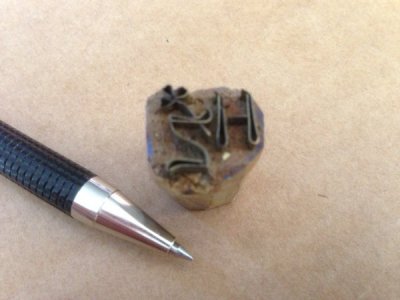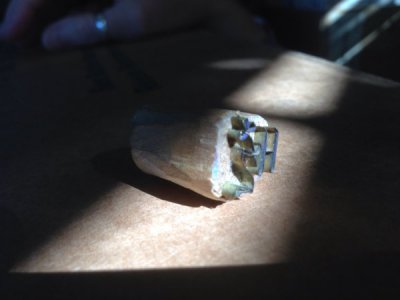- Joined
- Jul 11, 2014
- Messages
- 496
Two of my neighbors down the road have 'Groj Sails' going on today. So I walked down a few houses and took a look. No tools but I did see the pair of scissors shown below. I was told they were antique and old (same thing right) so I thought, "How much do they want for these?". Well it was 50 cents. So since the wife uses scissor all the time in sewing and crafts I thought, "Why not?" and bought them.
They logo says 'Old Glory Cutlery 2'
And Germany is stamped on the other side.
I figure they were made for sale in the UK or US since the verbiage is in English.
Anytime I purchase something I like to know more about it. Well these elude me, after a preliminary search on the internet I couldn't find much about them.(Read that as nothing). I did find this pair of 'Solingen' scissors on an antique site listed as made between 1900-1940 with an auction price of $99.00 (don't really care as I don't buy antiques usually and am not a collector).
They look very much alike so I figure same time period applies...maybe. Approximately 6 3/4" long, cut very well (after clean up and sharpening) and will be useful to my wife I'm sure.
Anyone know about this brand or have a wife/girlfriend who sews and might know?
They logo says 'Old Glory Cutlery 2'
And Germany is stamped on the other side.
I figure they were made for sale in the UK or US since the verbiage is in English.
Anytime I purchase something I like to know more about it. Well these elude me, after a preliminary search on the internet I couldn't find much about them.(Read that as nothing). I did find this pair of 'Solingen' scissors on an antique site listed as made between 1900-1940 with an auction price of $99.00 (don't really care as I don't buy antiques usually and am not a collector).
They look very much alike so I figure same time period applies...maybe. Approximately 6 3/4" long, cut very well (after clean up and sharpening) and will be useful to my wife I'm sure.
Anyone know about this brand or have a wife/girlfriend who sews and might know?




